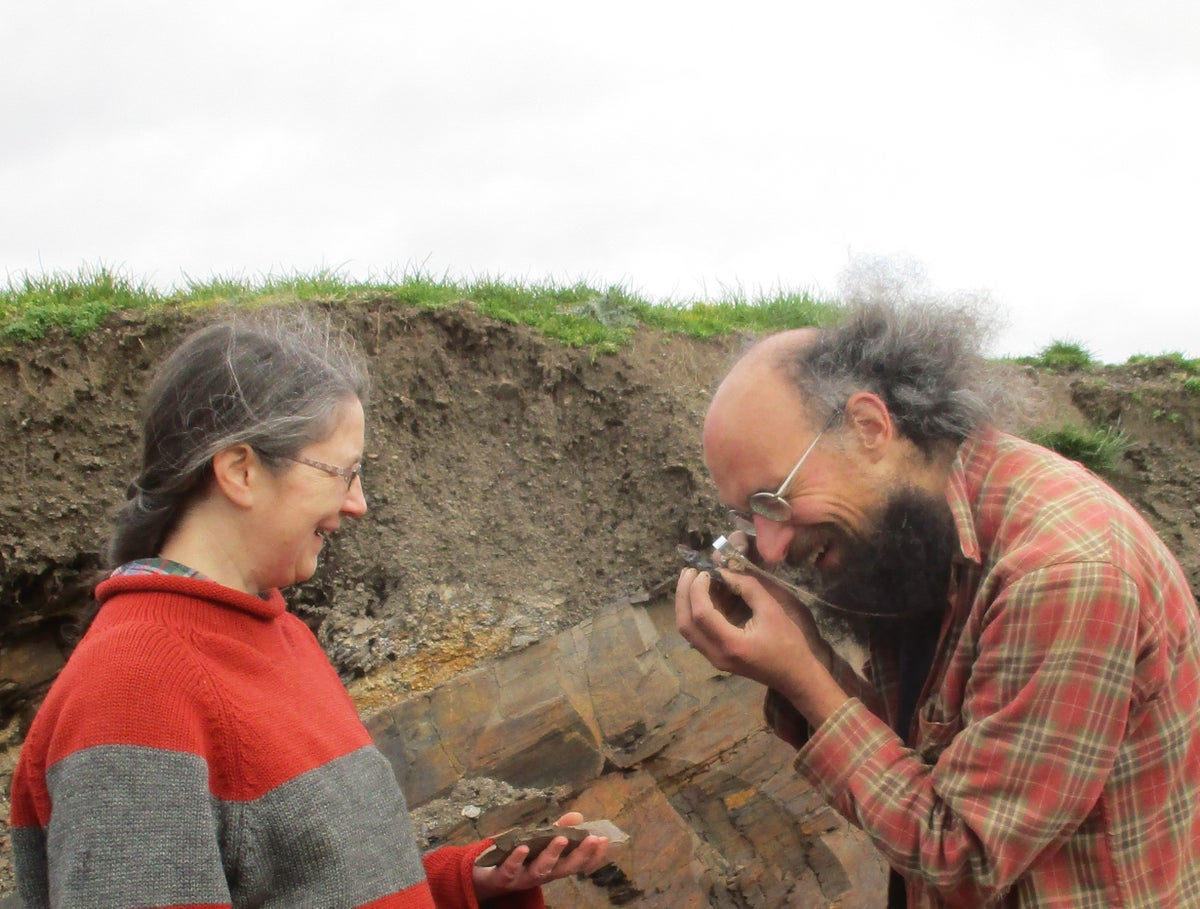
Unusually well-preserved fossils unearthed in Wales have revealed a fresh perspective on the early evolution and diversification of life during a key period in Earth’s history.
Scientists Lucy Muir and Joe Botting from Amgueddfa Cymru in Wales unearthed fossils of marine fauna that lived about 462 million years ago at a site near their home at Castle Bank Quarry in Wales during the 2020 Covid lockdown.
The new Castle Bank fossils represent a community of diverse and tiny soft-bodied marine organisms – about 1-5mm in length – according to the study published on Monday in the journal Nature Ecology and Evolution.
Researchers said most of these creatures had well-preserved soft tissues such as digestive systems and neural tissues like eyes, optic nerves and brains.
Scientists uncovered the fossils of over 170 species from the new fossil site, including those of strange worms, starfish, sponges, crustaceans, extinct arthropods and a primitive type of horseshoe crab.
These fossil deposits are similar to those found in Burgess Shale in Canada and contain exceptionally preserved soft body parts that can reveal more key details about the evolution of life on Earth.
“There are some very important early Ordovician fossil sites, but those are from much earlier, and entirely soft-bodied animals are rare even there. Here, it seems, we’ve got everything,” Dr Botting said.
Such exquisite fossils have not been unearthed previously from the Ordovician period of 485 to 443 million years ago, scientists said, adding that the creatures provide a “new perspective on early animal evolution” during this era.
“It coincides with the ‘Great Ordovician Biodiversification Event’, when animals with hard skeletons were evolving rapidly. For the first time, we will be able to see what the rest of the ecosystem was doing as well,” Dr Muir explained.
This time period was a critical era in the history of life when there was an “extraordinary diversification” of animals that produced hard skeletons and abundant fossils and the origin of more familiar ecosystems like coral reefs.
The new fossils also provide a peek into the transition of lifeforms from the preceding Cambrian era which was marked by the first evolution of multicellular worm-like organisms with a bilateral body plan.
Among the unearthed fauna were the youngest known examples of some unusual groups of animals such as the “opabiniids” with their vacuum cleaner-like proboscis and “wiwaxiids” – strange oval-shaped molluscs with a soft underbelly and a back covered with rows of leaf-shaped scales and long spines.
Researchers also unearthed the oldest examples of more modern-looking animals, including an animal that looks almost like an insect and may be distantly related to them.
While the preceding Cambrian era saw the rise of major groups of animals, the following Ordovician period led to a marine ecology that is thought to have been more similar to the world today.
Dr Muir said it was during the Ordovician when “ecology diversified, as well as animals themselves”.
“I like to refer to it as ‘when life got interesting’!”







